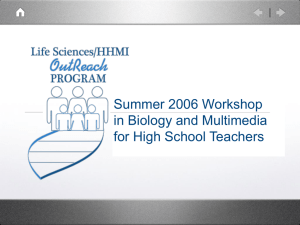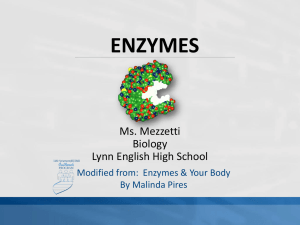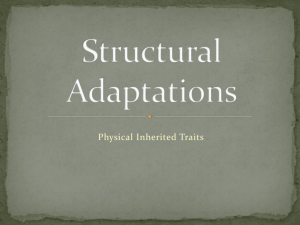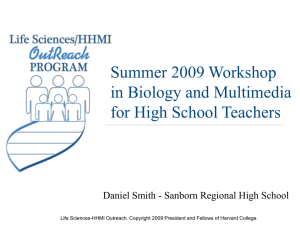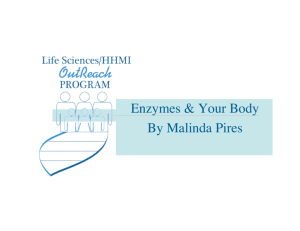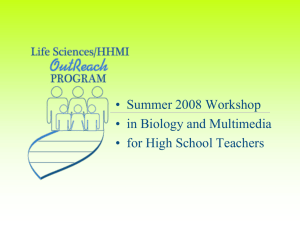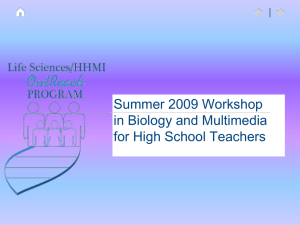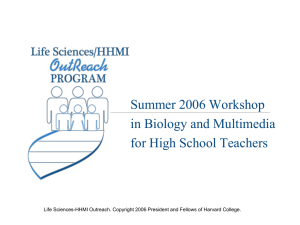Bacterial Genetics - Life Sciences Outreach Program
advertisement
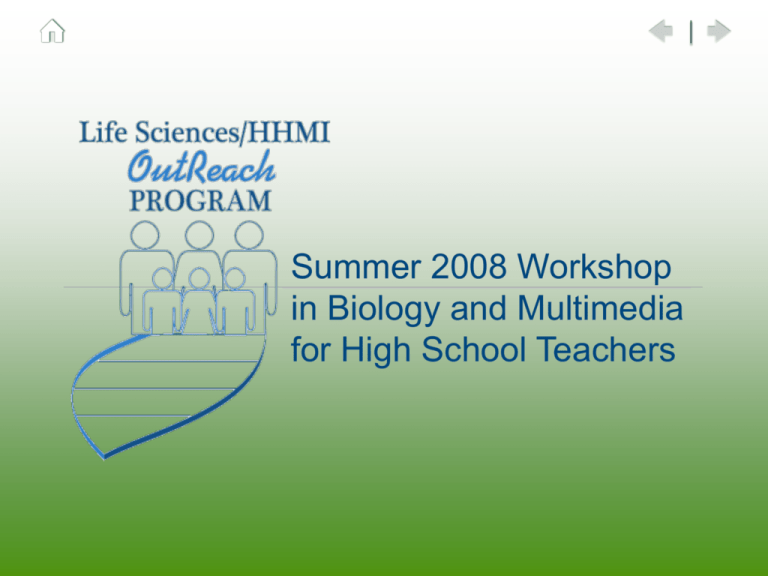
Summer 2008 Workshop in Biology and Multimedia for High School Teachers Summer 2008 Workshop Melissa Marchacos Marlborough High School Bacterial Genetics Central Dogma Recall a “new” old dogma: DNA RNA Protein Small Molecules Referenced from Dr. Jon Clary “An Ecological Approach to Microbes and Disease” Harvard University, Cambridge Life Sciences-HHMI Outreach. Copyright 2008 President and Fellows of Harvard College. Mechanisms of Genetic Transfer 1. Transformation A. The uptake of “naked” DNA from the surrounding environment 1. Free DNA (histones absent) 2. Plasmid DNA b Lysis b Recipient takes b+ Recombination b+ up fragment a + Donor microbe a + DNA fragments a a+ Recipient microbe Recombinant Life Sciences-HHMI Outreach. Copyright 2008 President and Fellows of Harvard College. Mechanisms of Genetic Transfer 2. Transduction A. Viruses that infect bacteria; utilize syringe like mechanism to introduce genome http://en.wikipedia.org/wiki/Image:Transduction_%28genetics%29en.svg Life Sciences-HHMI Outreach. Copyright 2008 President and Fellows of Harvard College. Transduction, cont. Bacteriophages replicate in two manners 1. Lytic: T4 bacteriophages, bacteriophages force host to burst, releasing new bacteriophages 2. Lysogenic: incorporates genome into host genome; replicates fairly harmlessly with host QuickTime™ and a TIFF (Uncompressed) decompressor are needed to see this picture. http://en.wikipedia.org/wiki/Phage Quick Time™ and a TIFF (Uncompressed) decompressor are needed to see this picture. http://en.wikipedia.org/wiki/Phage Life Sciences-HHMI Outreach. Copyright 2008 President and Fellows of Harvard College. Mechanisms of Genetic Transfer 3. Conjugation A. The exchange of a plasmid QuickTime™ and a TIFF (Uncompressed) decompressor are needed to see this picture. B. Usually occurs between same or very similar species C. Utilizes a pilus to connect the two microbes http://en.wikipedia.org/wiki/Image:Bacterial_Conjugation_en.png Life Sciences-HHMI Outreach. Copyright 2008 President and Fellows of Harvard College. Conjugation, cont. Plasmids A. Small, double stranded, circular pieces of DNA B. Replicate independently (self-replication) or within the host genome (episomes) Types of plasmids 1. 2. 3. 4. 5. 6. Conjugative plasmids: transmitted during conjugation, carry a variety of information R plasmids: resistance plasmids; protect against environmental factors, MDR (multiple drug resistance) plasmid Hfr plasmids: promotes genomic recombination Col-plasmids: codes for proteins that kill other microbes Degradative plasmids: contain sequencing that allows host to digest uncommon substances (ex: toluene, salicylic acid) Virulence plasmids: codes for altering the microbe into a pathogen Life Sciences-HHMI Outreach. Copyright 2008 President and Fellows of Harvard College. Mutation Types of mutations 1. Deletion 2. Insertion sequences (transposons) 3. Frameshift mutations 4. Silent mutations 5. Missense mutations 6. Nonsense mutations 7. Mutagen induced References 1. Campbell, Biology, 7e; http://wps.aw.com/bc_campbell_biology_7/ 2. Indiana University school of Medicine; http://www1.indstate.edu/thcme/micro/bactGen/Bacgenet.h tm 3. University of Miami Department of Molecular and Cellular Biology; http://www.bio.miami.edu/ 4. Wikipedia; http://en.wikipedia.org/wiki/Main_Page Life Sciences-HHMI Outreach. Copyright 2008 President and Fellows of Harvard College.
